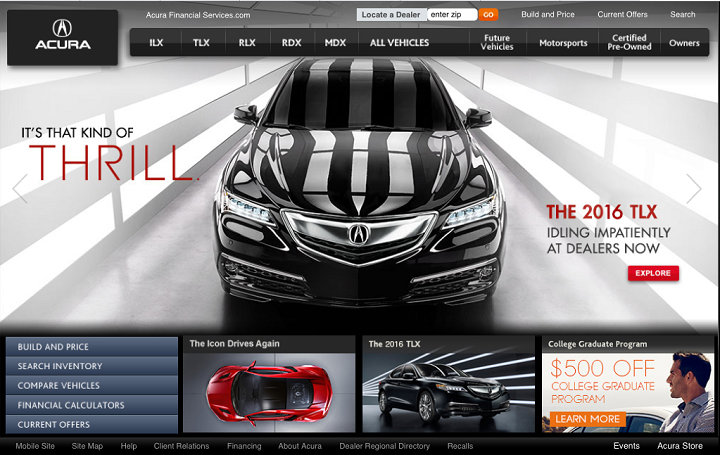2015 Automotive Mobile Site Study: Phablet Fuels Satisfaction with Auto Website Experience among Vehicle Shoppers
The J.D. Power 2015 Automotive Mobile Site StudySM finds that shopper satisfaction with automotive manufacturer (OEM) and third-party automotive websites is rising among shoppers who use smartphones with larger screens, or “phablets.” The study captures details on content and tool usage while measuring what is most effective on OEM and third-party automotive websites on a smartphone during the vehicle-shopping process.
Smartphones with screens 5.5 inches and greater—nearing a tablet in size—are classified as phablets. According to the study, vehicle shoppers who use phablets are significantly more satisfied with their website experience than those who use smaller smartphones (797 vs. 771, respectively, on a 1,000-point scale).

J.D. Power examines shopper satisfaction with website usefulness across four key measures (in order of importance): information/content, navigation, appearance, and speed. The study finds significant gaps in satisfaction across all study measures between shoppers who use phablets and those who use smaller phones: information/content (796 vs. 769, respectively); navigation (783 vs. 758); appearance (816 vs. 791); and speed (794 vs. 767).
Shoppers access a wider range of website content overall when using a phablet vs. a smaller smartphone, especially such interactive content as video (51% vs. 44%, respectively)—and overall satisfaction improves when shoppers access more content. For example, satisfaction is 805 among shoppers who use 13 or more tools vs. 745 among those who use 12 or fewer tools.
“Automotive manufacturer and third-party website designers should be mindful of growing phablet usage and take advantage of the larger screen by displaying more content and adding detail to maximize shopper satisfaction and drive more traffic to dealer showrooms,” said Arianne Walker, senior director, automotive media & marketing at J.D. Power. “The time spent on mobile devices for automotive shopping is increasing,[1] and this trend of buying and using phablets is expected to continue.”
Key Findings
Shoppers who are highly satisfied (overall satisfaction scores of 901 and above) with their shopping experience on a third-party website show higher levels of advocacy and loyalty than those with low satisfaction (scores of 500 and below). While 81% of highly satisfied shoppers say they “definitely will” recommend the website to friends or family, just 3% of those with low satisfaction say the same. Additionally, 82% of highly satisfied shoppers say they “definitely will” return to the website, compared with just 5% of those with low satisfaction.
Among vehicle shoppers who indicate they are delighted with their experience on a manufacturer brand website (overall satisfaction scores of 901 and above), 66% indicate they are more likely to test drive a vehicle after visiting the site, compared with only 16% of those who are disappointed (scores of 500 and below).
Overall, OEM responsive design websites do not perform as well as traditionally designed mobile sites (788 vs. 776, respectively). However, the difference in satisfaction between a traditionally designed mobile website and a responsive design website on a phablet is slight: 809 vs. 804.
Automotive Mobile Site Rankings
Two Japanese luxury brands—Acura (812) and Infiniti (809)—rank first and second, respectively, in the 2015 Automotive Mobile Site Study. Fiat ranks third with a score of 808.
Among third-party websites, TrueCar ranks highest with a score of 776. CarGurus and Yahoo! Autos rank second in a tie (744 each).
Consumer Tips
Based on the study’s findings, J.D. Power offers the following consumer tips:
Don’t judge an automaker, or a vehicle, solely by its website. Use the site to gather information and compare prices and features, but make your decision after visiting dealers and forming a impression of the vehicle in person.
In general, the larger the screen, the easier it is to get information from a website. It’s fine to use a smartphone for research, but use a device with a larger screen if it’s convenient to do so, as the experience will likely be more satisfying.
Stay aware of product introductions in the mobile device market. Something new and more sophisticated is always coming along.

 Yahoo Autos
Yahoo Autos 
